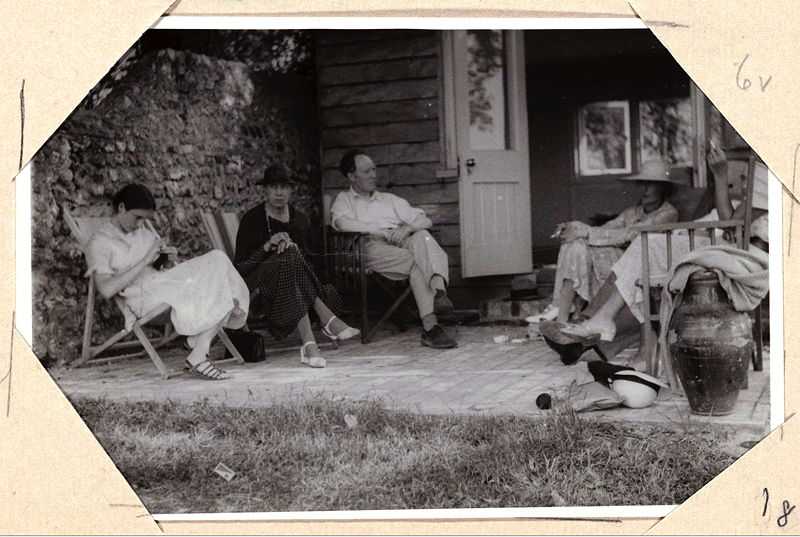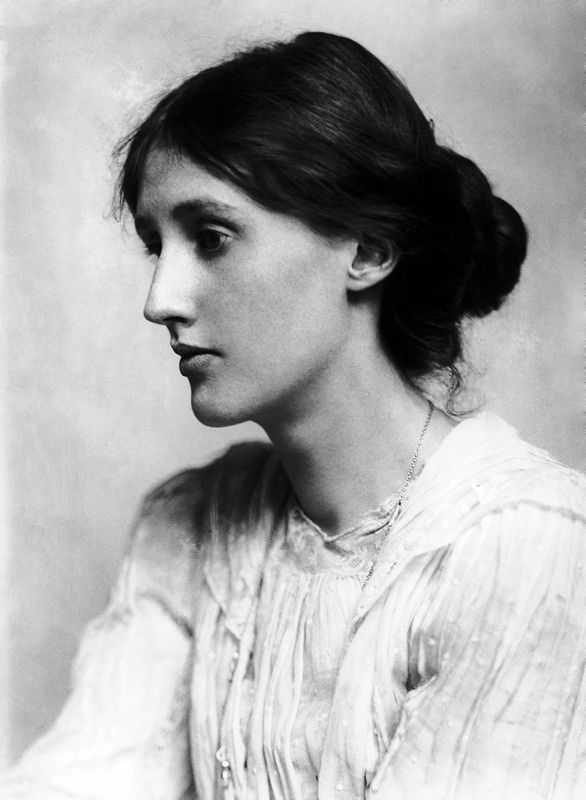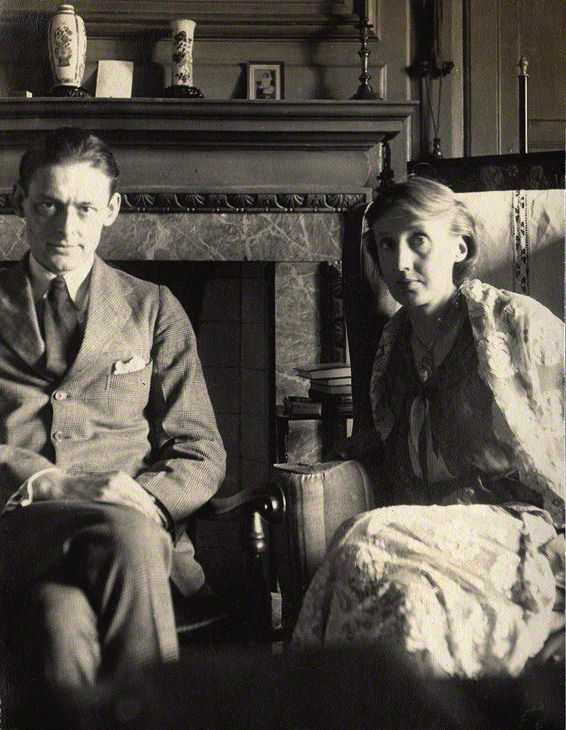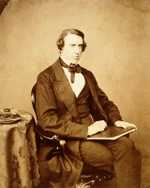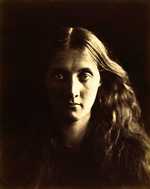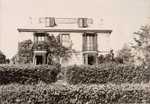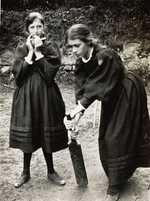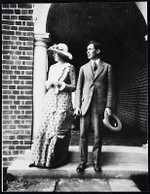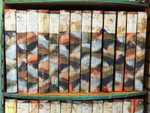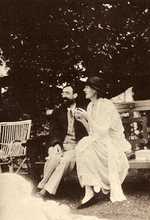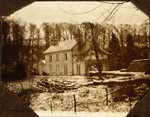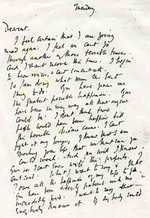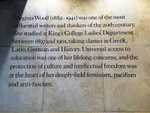1. Woolf's Early Life
Adeline Virginia Stephen Woolf was born on January 25, 1882 in Hyde Park Gate in Kensington, London.
She was the seventh child in a blended family of eight.
Her father, Leslie Stephen, noted historian, had one daughter by a previous marriage, and her mother, Julia Prinsep Jackson, a celebrated Pre-Raphaelite artist’s model, had three children from a prior marriage. Together the Stephens produced four children.
Woolf’s mother had firm views on the role of women. She believed that their work was of equal value to that of men, but in different spheres. She opposed the women’s suffrage movement.
The boys in Woolf’s family were sent to public school and later Cambridge, but she and her sister, Vanessa, were homeschooled. Her mother taught them Latin, French, and history and her father taught math. He allowed unlimited access to his vast library.
Woolf’s parents considered writing to be a respectable profession for women and she developed an early interest. At the age of eight, she wrote a story for Tit-Bits, a popular magazine. Later, from the age of ten to thirteen, she was the principal publisher of the Hyde Park Gate News, a paper that chronicled the activities of the Stephen family.
In 1895, Woolf’s mother died after a bout with rheumatic fever. She experienced serious depression. In 1897, her stepsister, Stella Duckworth, who had been a mother figure, died after an eight-year battle with bone cancer. This loss added to Woolf’s depression. In lieu of a definitive explanation for her problems, rest and sedatives were prescribed.
At the age of fifteen, Woolf entered the Ladies’ Department of King’s College, London, where she studied classics and history. From 1897 to1901, she interacted with early reformers of women’s higher education and became interested in the women’s rights movement. Another important influence was her Cambridge-educated brother, Thoby.
He had been her intellectual companion with whom she had discussed Shakespeare and the Greeks, and who showed respect for the quickness of her mind. In 1904, Woolf’s father died. This precipitated more mood swings. She was hospitalized for several months.
In 1905, Woolf’s siblings moved to the Bloomsbury neighborhood where they adopted a free-spirited lifestyle. Woolf appeared to be well and moved with them. The house was a gathering place for an intellectual circle of writers and artists and was named the Bloomsbury Group. Among the people Woolf met was Leonard Woolf. He was a political theorist and a civil servant based in Ceylon. He resigned his post and they were married in 1912.
2. Early Career
From 1913 to 1915, Woolf continued to suffer more severe bouts of depression which led her to attempt suicide.
On several occasions she was sent to Burley House in Twickenham, a private nursing home for women with nervous disorder. However, even as she struggled with mental illness, she began her first novel, Melymbrosia. It was a satire of British mores, colonialism, and imperialism.
After receiving negative feedback regarding the tone of the novel, she reworked the book and titled it, The Voyage Out, which was published in 1915 by Gerald Duckworth and Company, her half-brother’s publishing house.
In 1917, Woolf and her husband started their own publishing company, Hogarth Press. They focused on fiction, poetry, politics, and psychoanalysis. They published all of Woolf’s books and her sister, Vanessa, did the cover illustrations. The Woolf’s first maiden voyage in publishing was Two Stories. It was a short book, consisting of only 54 pages.
Over the next eight years, Woolf wrote a variety of pieces; two novels, one that examined women’s suffrage and another that was a character study devoid of plot or background, short story collections, and one essay. One of their publishing company’s short story collections, Monday or Tuesday, was readily admitted as being their worst production because of the many typos.
3. Her Finest Works
In 1925, Woolf wrote her fourth novel, Mrs. Dalloway. It examined the life of a fictional high-society woman in post-World War I England.
The style in which the novel was written, moving from the past to the present and developing the thoughts of the characters, earned it a spot in 2005 on Time magazine’s list of the 100 best English language novels since Time debuted in 1923. The novel went on to become her most well-known piece.
In that same year, Woolf wrote The Common Reader, a series of essays that began with medieval literature to Joseph Conrad, a master prose stylist. In 1927, Woolf wrote To the Lighthouse. This novel was about a family and their visits to the Isle of Skye in Scotland between 1910-1920. Woolf was not concerned about the plot of the story. It was secondary to its philosophical introspections. It was written as thoughts and observations and devoid of action.
In 1928, Woolf wrote Orlando: A Biography. This novel followed the adventures of a poet throughout history. It was written in satiric form. It is considered a feminist classic and has been used by scholars of women’s writing, gender and transgender studies.
In 1929, Woolf wrote A Room of One’s Own, a nonfiction piece. It was an argument for both a literal and figurative space for women writers within a literary tradition dominated by men.
In 1930, Woolf wrote The Waves. This novel is considered her most experimental. It consisted of soliloquies spoken by six characters. There is a seventh character, but he never speaks in his own voice. In a 2015 poll conducted by BBC, it was rated the 16th greatest novel ever written.
In 1932, Woolf wrote The Common Reader: Second Series. This is a collection of essays that begins with a study of Elizabethan writers and ends with an appreciation of Thomas Hardy, an English novelist and poet.
Woolf wrote The Years in 1937. It was the last novel published in her lifetime. It chronicled a family from 1880 to the mid-1930s. Ironically, this book is the least read and the least taught, but in Woolf’s lifetime, it was the fastest selling of her books and the only one to reach the bestseller lists in America.
4. Woolf’s Legacy
Most of Woolf’s life was punctuated by mental illness. Throughout the twentieth century, her problem was vaguely defined and misdiagnosed.
She was one of the writers who led the charge to change society’s perception of illness. She tried in her writing to undo labels and expose the falsity involved in defining anyone as ‘this’ or ‘that.’
She had several periods of illness during her writing, but she was able to talk herself into acceptance of them. A Room of One’s Own was mostly created in bed. This work created a whole subset of literary scholarship dedicated to understanding Woolf’s writings.
Woolf inspired seasoned scholars and aspiring writers. The circumstances surrounding Melymbrosia so intrigued Louise DeSalvo that she spent seven years looking for the various drafts that Woolf had written. She believed that the recovery of her work would be of enormous interest to readers. Melymbrosia was completed in 2002. Woolf’s novel, Mrs. Dalloway, so impressed Michael Cunningham, an American novelist, that he wrote The Hours in 1998.
In the novel he mirrors Woolf’s ‘stream of consciousness’ narrative style. He earned a Pulitzer Prize for Fiction in 1999. In 2002, the book was made into an Oscar-winning film of the same name.
For decades, Woolf talked to herself and finally struck a deal with her illness. She agreed to suffer it, if it paid her back. It did and readers around the world have reaped the benefits of this compromise.
On March 28, 1941, Woolf filled her overcoat with rocks and walked into the Ouse River. There is myriad speculation why someone commits suicide; depression, traumatic experience, family history, etc. Many of these reasons have been assigned to Woolf.
Also, other reasons include World War II and the bombing of her London home by the Germans and rumors that if the Germans took over London, she and her husband, who was a Jew, would be targeted. When one reads her suicide note, she appears to have lost hope and was tired. She had battled her demons and, as she writes, “I can’t fight any longer.”
Woolf’s body was not found until April 18, 1941. Her body was cremated and her remains were buried beneath an elm tree in the garden of Monk’s House, their home in Rodmell, Sussex.
